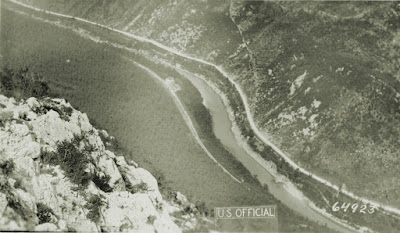
The Germans had around 500,000 of these converted rifles by the outbreak of war in 1914, which was extremely useful in a war of attrition. Our model in game reflects the iconic and rather viscous looking Seitengewehr 1871 bayonet. The hole from which the enbloc would fall out was typically sealed too. This conversation made several changes to the weapon: the addition of a clip bridge for the stripper clip system in use with the new ammunition, rechambering of the barrel, a feed interrupter, and loading made easier with cuts to the chamber and receiver wall. In 1905 the Gew88 was revisited, and many of the rifles were converted to take the new 7.92 ‘Spitzgeschoß’ (pointed projectile) spitzer bullet. While the Mauser production was well under way for the Gewehr 98, it was noticed that a widespread conflict in Europe would eat up large numbers of arms, prior to the outbreak of World War One. Overall, just shy of 3 million were produced for Germany and its allies. Far from perfect, these rifles would be the mainstay of the German army until the adoption of the Gewehr 98 later.

However the G88 enbloc could be loaded both ways. This weapon would see a 5-round capacity, a rimless 8mm cartridge, barrel jacket and enbloc design akin to that of the Mannlicher system.
#Ww1 isonzo series
Borrowing from a series of prototype and submitted designs, eventually the pattern of the Gewehr 1888 would be ironed out. They needed to produce a design which would replace the ,now obsolete, black powder Mauser model 1871. This resulted in something of an arms race within Germany itself. Prior to its debut, the German Army found itself on the backfoot with the introduction of the Lebel 1886 combined with the new smokeless cartridge 8mm Lebel. Gewehr 88/05 Commission Rifle First up, we have the Gewehr 88/05 Commission Rifle. On squares in big Italian cities, concerts are held by military bands. The Italian Army Forces open their barracks to the public, showing exhibitions of The Great War, often combined with sport demonstrations by soldiers. Reaching the 10th coffin in the line, she slumped to the floor and screamed her son's name. Maria Bergamas, the mother of Italian soldier Antonio Bergamas whose body was never recovered, made the difficult choice in the Basilica of Aquileia on 28 October 1921. The body of Italy's Unknown Soldier was chosen from among 11 coffins containing the unidentified remains of fallen Italian soldiers who fought, retrieved from various areas of the Italian front of WW1. The most important people in the Republic pay homage to the Italian Unknown Soldier and the Redipuglia War Memorial, where over 100.000 Italian soldiers found their final resting place. On this day, the Italians commemorate the victory in WW1, an event that they consider the completion of the process of an unified Italy. Today is National Unity & Armed Forces Day in Italy.


 0 kommentar(er)
0 kommentar(er)
